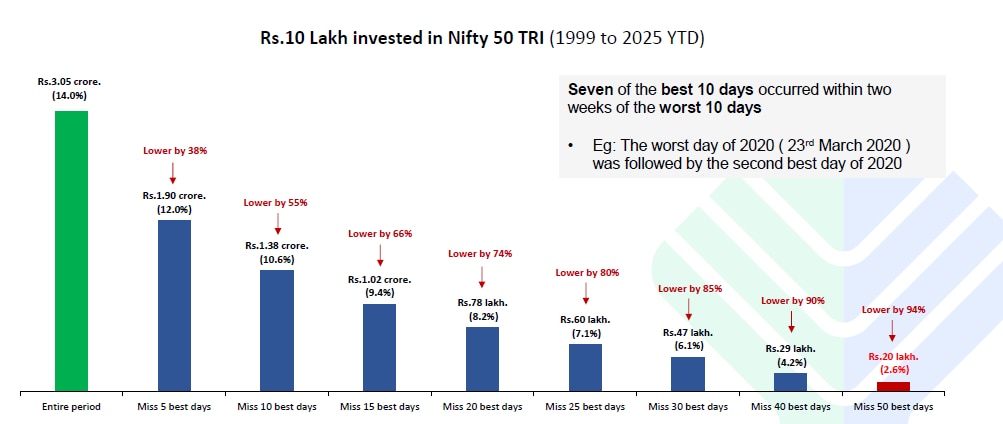
 A total 84 per cent of the times Indian equities gave more than 10 per cent returns over 7 years. Eighty per cent of the times Indian equities have tripled in 10-11 years.
A total 84 per cent of the times Indian equities gave more than 10 per cent returns over 7 years. Eighty per cent of the times Indian equities have tripled in 10-11 years.  A total 84 per cent of the times Indian equities gave more than 10 per cent returns over 7 years. Eighty per cent of the times Indian equities have tripled in 10-11 years.
A total 84 per cent of the times Indian equities gave more than 10 per cent returns over 7 years. Eighty per cent of the times Indian equities have tripled in 10-11 years. If a stock investor had invested Rs 10 lakh in Nifty 50 in 1999, chances are he would be sitting on a Rs 3.05 crore corpus (including dividend) today, data compiled by FundsIndia showed. The digital platform for mutual funds and investment solutions noted that equity returns were non-linear and missing a few best days in the market would have reduced stock returns significantly.
"If you missed the 15 best days in the last 25+ years, your portfolio lost 2/3rd of its value," FundsIndia said.

The online mutual fund investment platform said seven of the best 10 days occurred within two weeks of the worst 10 days. For example, the worst day of 2020 (March 23, 2020) was followed by the second best day of 2020.
Funds India said even if an investor had invested right before a market crash, over long time frames the returns have still turned out to be decent. Net-net, equity markets have delivered positive returns in 80 per cent (36 years) of the calendar years. Out of this, 13 years saw 30 per cent or higher returns. In the years of downside, only 2 per cent or just one year saw 30 per cent or worse drop.
A total 84 per cent of the times Indian equities gave more than 10 per cent returns over 7 years. Eighty per cent of the times Indian equities have tripled in 10-11 years. Investing in Indian stocks with a time frame of 7 years has led to a good experience if one is not hesitant to invest large lumpsum money in equity, stagger entry over six months, FundsIndia said.
"Equity SIPs over 7+ Years have historically given a good return experience. Debt historically has delivered 6-8 per cent over 5+ years," it said.
In 49 per cent of instances where the Sensex reached an all-time high, it did not fall to a level 10 per cent lower. Further declines occurred from much higher levels.
Key takeaways was that over the long term of 10-15 years, equity provided returns above inflation Long Term return expectation could be inflation + 4-6 per cent. That said, 10-20 per cent decline on index happens almost every year. A 30-60 per cent decline should be a part of expectation for every 7-10 years, FundsIndia said.